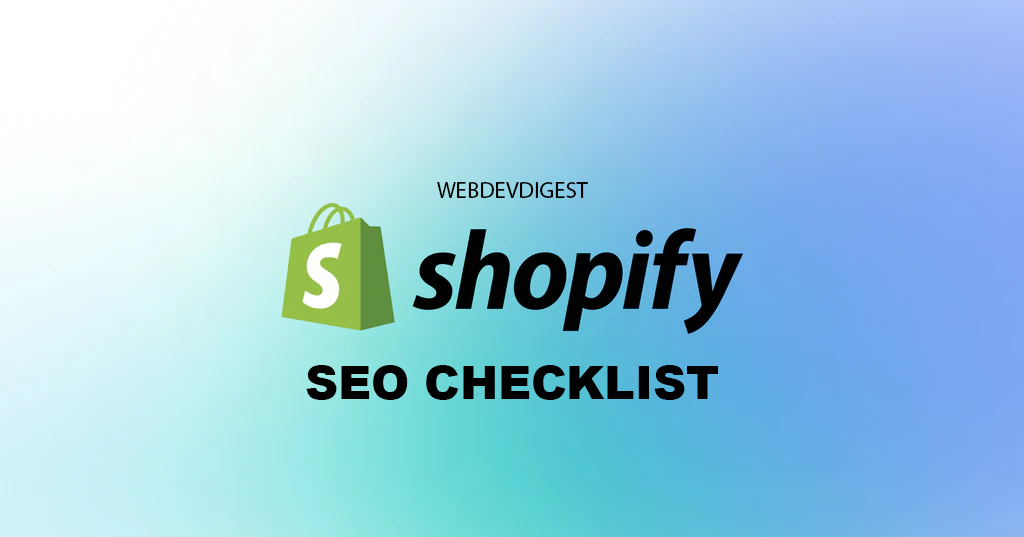Having an online store isn’t just an option; it’s a necessity. As a Shopify store owner, you’ve taken that first step towards online retail success. But what comes next? SEO (Search Engine Optimization), the unseen engine driving your online visibility, needs your attention. SEO isn’t just about keywords; it’s about creating a seamless user experience and reaching out to the right audience. That’s why we’re here with the Shopify SEO checklist to make your eCommerce journey smoother and more profitable.
Understanding SEO on Shopify
Before diving into the checklist, it’s crucial to understand what SEO on Shopify entails and why it matters. In simple terms, SEO helps your store become more visible to people looking for products or services like yours. But how do you check your SEO on Shopify?
- Login and Navigate: Start by logging into your Shopify store and navigating to the ‘Online Store’ section.
- Assess SEO Settings: Here, you can review your current SEO settings, including meta titles, descriptions, and URL handling.
Remember, the idea is not just to “set and forget” but to continually analyze and optimize. Tools like Google Search Console will be your friends in tracking performance and improvements (screenshot).
Getting Started: Basic SEO on Shopify
SEO might sound intimidating, but with our guidance, it becomes a delightful learning experience. Here’s a detailed walkthrough:
- Keyword Research: Understanding your audience’s language is key. What words would they use to search for your products? Tools like Google Keyword Planner can help you find the right terms.
- Optimize Meta Details: Your meta titles and descriptions are what users see in search results. Make them engaging and relevant, and don’t forget to include your keywords.
- URL Structure: A clean URL, free of unnecessary numbers and characters, is more appealing. It’s a small detail that can have a big impact.
- Images Matter: Ever thought your product images could boost SEO? By adding descriptive alt text, they can!
- Internal and External Links: Guide your users by linking to authoritative sources and to relevant pages throughout your website.
Is Shopify Good for SEO? An Honest Look
Shopify is more than just an online store builder; it’s an SEO-friendly platform. Its user-friendly interface makes it easy for beginners to get a grip on SEO essentials. But what really makes it shine are features like customizable H1, title, and meta tags, automatic sitemap generation, and a plethora of SEO apps available in the Shopify App Store.
Audit Like a Pro: SEO Audit on Shopify
An SEO audit is like a health checkup for your Shopify store, identifying areas of strength and improvement. Here’s how you can do it:
- Technical Analysis: Look into issues like broken links, site speed, and responsiveness.
- Content Check: Evaluate your use of keywords, meta details, and overall content quality.
- Link Building: Understand your backlinks profile and how you are perceived in the online world.
- Use the Right Tools: SEMRush, Moz, or similar SEO tools can provide in-depth insights (screenshot).
Your Shopify SEO journey is about continuous learning and adaptation. Your SEO audit is your compass, guiding you through the complex yet rewarding landscape of eCommerce SEO.
Advanced Strategies for Shopify SEO: A Deeper Dive
As you’ve started to explore the world of SEO on Shopify, you may wonder what more you can do to take your store to the next level. SEO isn’t a one-size-fits-all solution; it requires continual learning, adapting, and growing. In this section, we’ll delve into more advanced strategies and methodologies to enhance your Shopify SEO game.
Harnessing Social Media for SEO
Yes, social media can boost your SEO! While it doesn’t directly impact your search rankings, a strong social presence leads to more visibility and traffic. Engaging content and smart use of hashtags can take your brand far, building awareness and fostering community.
Enhancing User Experience (UX)
Google loves sites that users love. Improving the user experience on your Shopify store can significantly boost your SEO ranking. Here’s how:
- Mobile Optimization: Ensure that your site looks and performs well on mobile devices. A responsive design is a must in our mobile-first world.
- Loading Speed: A slow site frustrates users and can harm your rankings. Optimize images, use caching, and consider a Content Delivery Network (CDN).
- Intuitive Navigation: Help users find what they’re looking for with clear, easy-to-navigate menus and site structures.
Creating Quality Content
Content is king, and your Shopify store is no exception. You’re not just selling products; you’re telling a story and solving problems.
- Start a Blog: Share your expertise, tips, and insights related to your industry. Consistently posting valuable content will not only engage your audience but also help you rank for more keywords.
- Use Multimedia: Videos, infographics, and images break up text and make your content more engaging.
- Build Backlinks: Guest posting on related blogs or collaborating with influencers can help you gain high-quality backlinks.
Leveraging Shopify SEO Apps
There are numerous SEO apps in the Shopify store designed to help you. Whether it’s analyzing your site, automating SEO tasks, or providing insights, these tools can be incredibly beneficial. Some popular choices include SEO Booster, Smart SEO, and Plug in SEO.
Regular SEO Audits: A Must
Performing regular SEO audits, as we discussed earlier, is essential to keep your store in top shape. Don’t just set and forget your SEO strategies; continually review and adjust them to keep up with the ever-changing algorithms and industry trends.
Conclusion: Your Shopify SEO Success Path
Shopify SEO isn’t just a checklist to mark off; it’s a continuous journey that, when done right, leads to success. By focusing on your users, leveraging all available tools, and being open to learning and growing, you can take your Shopify store from a small online shop to a thriving eCommerce hub.
Remember, the steps outlined in this guide, both basic and advanced, are integral to your SEO success. So go ahead and turn your Shopify store into an SEO powerhouse, and if you’re just starting out, don’t forget to check our Shopify for Beginners guide.





